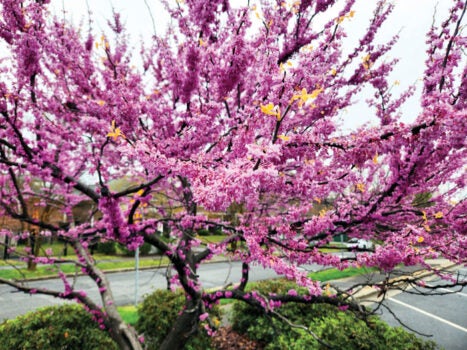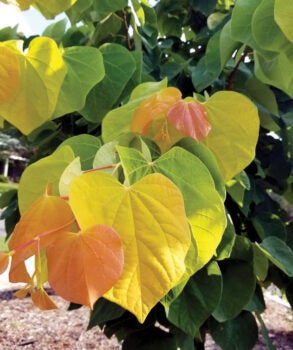Darrell Blackwelder: Redbuds add color to landscapes
Published 12:00 am Saturday, March 30, 2024
Spring color has arrived with blooming trees painting the landscapes around the county. The perfect companion tree for spring flowering dogwoods is the redbud (Cercis canadensis). Even though the tree is called a redbud, native redbud blooms are actually rosy-pink with a purple tinge. Redbuds are native, growing as far south as northern Florida as far north as New Jersey, and extending west to Mexico.
Redbuds grow with a flat grown with rounded edges in both sun and shade, reaching a maximum height of 20-25 feet. Most are multi-stemmed but can be trained as a single-trunk tree. These trees can adapt to most soil conditions but prefer moist soils from clays to sandy-loams. Redbuds easily blend when mass planted with dogwoods and other blooming trees in wooded landscapes or can be planted as single specimen plants.
There are quite a few cultivars brought to North Carolina from as far away as Korea. The J.C. Raulston Arboretum in Raleigh has one of the largest redbud collections in the world. Being a true legume, the flower is pea-like producing interesting seed pods. Named cultivars may also have glossy, purple or even yellow orange leaves. “Rising Sun” is the perfect example with usual yellow orang foliage.
Unfortunately, redbuds have one problem with a relatively short lifespan. Most native trees have problems with canker and Verticillium wilt. Newer cultivars are disease resistant and insects are not a major threat. Go to https://plants.ces.ncsu.edu/plants/cercis-canadensis/ for more information and a list current redbud varieties.
Darrell Blackwelder is the retired horticulture agent and director with the North Carolina Cooperative Extension Service in Rowan County. Contact him at deblackw@ncsu.edu.





